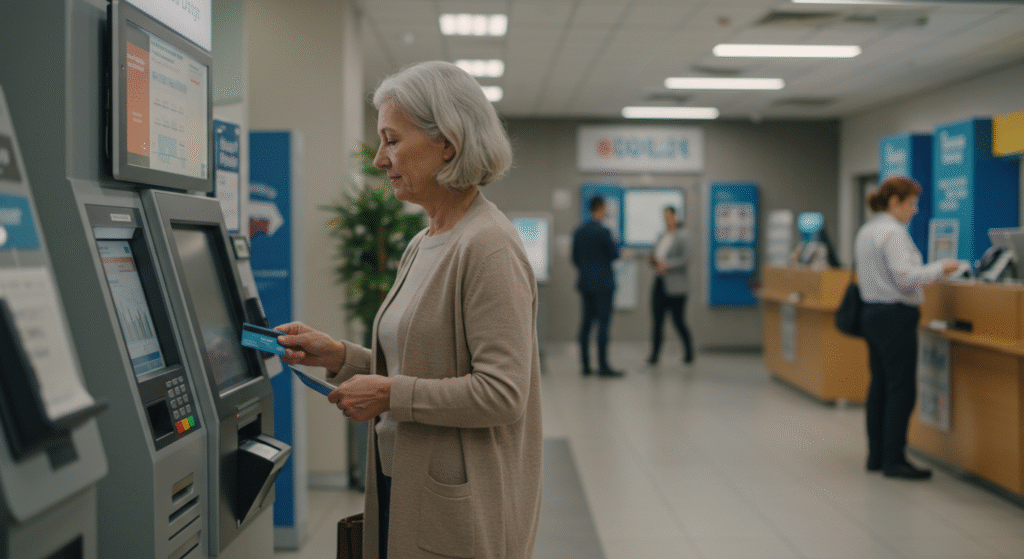Picture sitting at your kitchen table, bills piled up, that sinking feeling building as you glance at your latest credit card statement. If managing credit card debt ever feels overwhelming, you’re not alone. The good news is, you can take control and find hope credit card debt relief is possible, and it can help you break free from constant stress.
I’m here to walk you through practical, up-to-date ways to manage and overcome credit card debt. This guide isn’t filled with theory; it’s packed with proven steps, expert tips and insights people use every day. Whether your debt feels manageable or massive, everything you need to start your journey to becoming debt-free is right here. Let’s tackle this together, one clear step at a time.
Understanding Credit Card Debt Relief

Debt relief might sound complicated, but it really comes down to finding a pathway out of overwhelming bills. If you’ve stared at your credit card statement and thought, “How will I ever pay this off?” credit card debt relief is a solution worth understanding. It’s not about just giving up or running away from your debt. It’s about using proven tools, smart strategies, and sometimes professional help to reclaim financial control.
Let’s break down what credit card debt relief really means, how it works, the different kinds, what to watch out for, and some practical ways to move forward. I’ll also highlight who might benefit from each option, so you don’t waste time on an approach that won’t truly help.
What Is Credit Card Debt Relief?
Credit card debt relief represents a range of strategies designed to help you lower your balances, shrink your monthly payment, or make your debt more manageable often at a lower interest rate or with new payment terms. In some cases, you can even reduce the total amount you owe.
The most common forms of credit card debt relief include:
- Debt consolidation: Combines several debts into one loan or balance transfer card with a lower rate.
- Debt management plans: Set up with nonprofit credit counseling groups that work out easier payments on your behalf.
- Debt settlement: Negotiates with creditors so you pay less than the full amount owed, often as a lump sum.
- Bankruptcy: A legal solution for wiping out debts entirely or setting up a court-ordered repayment plan.
Every option brings its pros, cons, risks, and requirements. Debt relief isn’t only for people in crisis if your monthly payments eat up half your income or you’re losing sleep, it pays to explore these methods early.
Types of Credit Card Debt Relief
Here’s a quick side-by-side look at the main types, so you can see what matches your circumstances:
| Type | How It Works | Best For | Key Caveats |
|---|---|---|---|
| Debt Consolidation | One monthly payment at a lower rate | Good credit, steady income | May require new loan, fees possible |
| Debt Management Plan | Negotiated repayment via counselor | Struggling but regular income | Must close cards, 3-5 year process |
| Debt Settlement | Pay less than owed via negotiation | Behind on payments, serious hardship | Credit harm, taxes on forgiven debt |
| Bankruptcy | Erase or restructure most debts | Severe insolvency, no other way out | Severe credit impact, court process |
Quick Tips: Getting Started Safely
Before jumping in, keep these important steps in mind. They’ll help you avoid scams and find solid ground from day one.
- Check credentials. Only work with certified, nonprofit credit counseling agencies.
- Avoid up-front fees. Reputable programs don’t require big payments before service.
- Get everything in writing. Don’t rely on phone promises.
- Ask how your data is used. Protect your privacy avoid sharing sensitive info with random callers.
- Compare several options. One size doesn’t fit all.
- Check reviews. Real-life results from other people matter.
Risks and Benefits: Pros vs. Cons
When you weigh options, consider both sides. Here’s a quick comparison table:
| Pros | Cons |
|---|---|
| Lower monthly payments | May extend debt timeline |
| Possible reduction in total owed | Credit score drop possible |
| Relief from creditor collection calls | Upfront, monthly, or settlement fees |
| Stress relief, clearer financial path | Possible tax bill on forgiven debt |
Some relief providers advertise magic solutions, but most real progress comes from small, patient steps. Look for programs and organizations that value education, realistic expectations, and ethical practices.
Common Mistakes People Make
It’s easy to fall into traps when you’re stressed about money. Here are mistakes I see most often, along with how to avoid them:
- Paying money upfront for promises. Only pay once you see evidence of service.
- Ignoring written agreements. Always get official documents, not just emails or calls.
- Choosing the wrong program for your debt size or income. Tailor the solution to your real situation.
- Not reading the fine print. Watch for hidden fees and details.
- Closing credit cards too soon, which can sometimes hurt your credit more than help.
- Missing out on non-profit help. Many jump to for-profit settlement without exploring free counseling.
Practical Steps Toward Debt Relief
Starting your journey to credit card debt relief doesn’t require a miracle just a plan and a bit of patience. Here are proven steps to get things rolling:
- Gather all your bills. List balances, interest rates, and due dates.
- Create a simple budget. Find out what you can actually pay each month.
- Review your credit report. Know what’s reported and fix any errors early.
- Contact a nonprofit credit counselor. Get a personalized review often for free.
- Decide which relief path fits your needs. Match your income, credit score, and urgency.
- Follow through with the plan. Commit to regular check-ins and progress reviews.
- Celebrate small wins. Every step forward matters, even if it feels slow.
Taking the time to understand credit card debt relief along with the right attitude and guidance can turn a stressful mountain into a series of small, manageable hills.
Best Strategies to Get Out of Credit Card Debt in 2025

Finding the best way out of credit card debt can feel like standing at a crossroad with a dozen signs pointing in different directions. In 2025, high interest rates and bigger balances are common, but so are new tools and proven methods to help you chip away at what you owe. Here’s how you can create a clear and effective plan for credit card debt relief this year, no matter your starting point.
The Snowball and Avalanche Methods
Deciding how to tackle multiple credit card balances often starts with picking your payment strategy: the snowball or the avalanche. Both give you a roadmap, but each takes a different route.
The Snowball Method: Motivation by Momentum
Imagine Sarah, who has balances on five cards. She lists them by amount owed and starts putting every extra dollar toward the smallest balance, making minimum payments on the rest. When she wipes out that smallest card, she feels a surge of relief. She then tackles the next largest balance, rolling her old payment into the next card. With each win, her confidence grows, making it easier to keep going just like rolling a snowball that gets bigger as it moves.
- Psychological perk: Quick victories boost motivation. You see progress right away, which is especially helpful when debt feels endless.
- Tip: Write down your debts from smallest to largest, and check each one off as you pay it off. Keep your list visible for encouragement.
The Avalanche Method: Save More on Interest
Now picture Mike, whose highest balance also has a steep 24% APR. He targets this expensive card first, sending every available dollar its way while making minimums elsewhere. Though progress feels slower, he shaves off hundreds in interest over the year. When this card is gone, he moves to the next highest rate.
- Financial benefit: Paying off high-interest accounts first means you spend less on interest. This saves money and can shorten your total payoff time.
- Tip: List debts by interest rate, not balance, for this plan. Use a debt payoff calculator to track how much you’re saving on interest.
How to Track Progress
Whether you’re rolling with the snowball or climbing the avalanche, tracking makes a big difference. Try these tools:
- Budgeting apps with debt payoff trackers
- Spreadsheets you check weekly
- Old-fashioned pen and paper on the fridge
Both methods work when you commit and track your wins. Choose the one that keeps you motivated and fits your financial personality.
Balance Transfers and Consolidation Loans
Taking advantage of lower interest rates with a balance transfer or a consolidation loan can feel like opening a pressure valve. The key is knowing if these options are right for you and dodging the hidden traps.
Who Benefits Most?
- Borrowers with good credit (usually a score above 670)
- People whose balances are not maxed out (preferably below 70% of card limits)
- Anyone tired of splitting payments across several cards
How Balance Transfers Work
You move your debt from one or more high-interest cards onto a new card that offers 0% APR for an introductory period (typically 15 to 18 months). This pause on interest gives you more time to pay down your balance without it ballooning from finance charges.
Potential Pitfalls (and How to Dodge Them)
- Balance transfer fees: Most cards charge 3-5% of the amount moved. Do the math so you know it’s still a savings.
- Rate cliff: If you don’t pay off the balance before the intro period ends, regular high rates kick in.
- Temptation for new spending: Resist adding new purchases to the transferred card. Keep it for payments only.
Consolidation Loans
A personal loan with a lower rate can combine your credit card debts into one payment. This is ideal if you have steady income and qualify for a good rate (often around 13% in 2025).
Best Practices:
- Compare offers from banks, credit unions, and online lenders.
- Use the loan only for debt payoff close or cut up paid-off cards if you’re tempted to overspend.
- Watch for origination fees and avoid loans longer than five years if possible.
Key Takeaways for This Approach:
- Make every monthly payment, on time.
- Avoid building new balance during your payoff journey.
- Check your progress monthly, celebrating each reduction in your total owed.
Negotiating With Creditors and Exploring Debt Management Plans

Sometimes the usual payment strategies aren’t enough, especially if you’re behind or facing hardship. Reaching out directly to creditors or joining a debt management plan can help you regain stability and reduce stress.
Basics of Negotiation
If you’re struggling to keep up, call your credit card company before you miss payments. Explain your situation honestly and ask about hardship programs, which may include:
- Lower interest rates
- Temporary payment reductions
- Waived fees
Best Approach:
- Be polite, persistent, and keep records of every call
- Get all terms in writing, not just over the phone
- Prepare to explain your income, expenses, and what you can afford
What to Expect From Debt Management Plans
A debt management plan (DMP) is set up through a nonprofit credit counseling agency. You make a single payment each month to the agency, which splits it among your creditors, often at a reduced interest rate.
Real-Life Example: After losing her job, Lisa fell behind on four credit cards. A credit counselor helped her enroll in a DMP, lowering her rates from 25% to 9%. She closed her cards (as required by the plan) and paid off her $12,000 debt over four years, avoiding bankruptcy and late payment penalties.
When These Steps Make Sense:
- When you owe more than $5,000 and juggling minimums isn’t working
- If your interest rates are sky-high and you’re falling behind
- When you want a steady, realistic payoff and don’t qualify for lower-rate loans
Cautions and Tips:
- Only work with certified nonprofit credit counseling agencies.
- Avoid companies that charge big upfront fees or promise absolute forgiveness.
- Understand that DMPs typically require you to stop using credit cards, which can affect your credit score in the short term but helps you long term.
Tracking and Accountability:
- Stay involved, check statements monthly to ensure payments are credited.
- Celebrate every account marked “paid in full,” even if it takes several years.
- Reach out for help if you’re struggling to keep up with plan payments.
Choosing one or more of these strategies can make a huge difference in your journey toward credit card debt relief in 2025. The right plan meets you where you are, sets you up for steady wins, and helps you turn the page toward a debt-free future.
When to Consider Professional or Legal Help

Sometimes credit card debt becomes so overwhelming, it starts to shape your daily life and threaten your future. While most people can manage on their own with steady payments and a solid plan, there are moments when calling in a pro or even a legal expert isn’t just smart it’s essential. If you’re starting to feel outmatched or anxious about what comes next, here’s how to know if it’s time to reach for outside help.
Recognizing the Signs You Need Professional Support
Not every debt problem needs an attorney, but some signals shouldn’t be ignored. You might need to team up with a debt relief expert or consumer attorney if you’re facing:
- Persistent calls or letters from collection agencies that feel aggressive or cross the line into harassment
- Threats of lawsuits, wage garnishment, or actual court paperwork arriving at your home
- A situation where you feel paralyzed, unsure whether you even owe the debt in question, or if it’s past the legal limit for collection
- Debt balances, late fees, or agreements you don’t understand or believe are deceptive
When these issues appear, going it alone wastes time and often leads to mistakes. Trained professionals help you cut through the confusion and find a clearer, safer path to relief.
When a Credit Counselor Makes Sense
A certified nonprofit credit counselor is your first stop if your main struggle is getting organized, building a realistic plan, or understanding your options. They also help you:
- Create a budget and spot unhealthy spending patterns
- Negotiate with creditors for better terms, sometimes lowering your interest rates
- Explore debt management programs if you can’t keep up with minimum payments
These services are often low-cost (or free) and don’t impact your credit just for asking. Think of a credit counselor as your personal coach for all things debt-related, especially if your main problem is feeling lost or stressed.
When Legal Help Is the Best Move
There are serious situations where only an attorney can protect your rights and get real results. I always recommend seeking legal advice or hiring a lawyer if:
- You’ve been served with a lawsuit, or you worry one is coming soon
- Your wages are being garnished or your assets are at risk because of unpaid credit card debt
- You believe debt collectors are breaking the law (using threats, lies, or harassment)
- You’ve got questions about whether the debt is even valid, for example if it’s so old the statute of limitations applies in your state
Lawyers who handle consumer debt know the ins and outs of state and federal laws (including the Fair Debt Collection Practices Act), and they spot problems you might miss. They also negotiate settlements from a stronger position, defend you in court, and make sure no one tramples on your rights. If your financial life feels like it’s on the brink because of legal threats, a qualified attorney levels the playing field.
Dealing With Complex or High-Stakes Situations
Not all debt is equal. If you own a home, have substantial assets, or there’s a chance of losing important property, professional help matters more than ever. Lawyers can:
- Advise you on asset protection strategies if you fear losing savings, vehicles, or real estate
- Help with complicated debts involving mortgages or co-signed loans
- Guide you through bankruptcy if it becomes the right path (including what you need to know before, during, and after filing)
When your financial future is on the line, tapping legal experience helps you avoid costly mistakes and saves you from lasting damage.
Spotlight: Common Legal and Professional Pitfalls
Lots of people wait too long before asking for help, and that can make a tough situation worse. Here are some pitfalls to watch for:
- Ignoring a lawsuit notice – Even if you don’t owe the full amount, not responding means a default judgment against you, often leading to wage garnishment or bank account levies.
- Paying up-front fees to debt relief ‘companies’ – Reputable nonprofit counselors and attorneys don’t take big fees before services are rendered.
- Trying to negotiate settlements without knowing your rights – You might accept a deal that hurts your credit, opens you to taxes, or leaves you still on the hook.
- Assuming debt collectors can take anything they want – Many assets and a portion of your income may be protected by law.
It’s always better to seek reputable advice early. It puts you in a position of strength not fear.
Practical Tips for Finding Quality Help
When searching for a professional, a little homework goes a long way. Here’s what I always check:
- Make sure credit counselors are non-profit and certified by organizations like the National Foundation for Credit Counseling (NFCC).
- Check attorney credentials through your state’s bar association or consumer advocacy groups.
- Read reviews and ask for referrals from people you trust.
- Ask for clear information on fees, services, and expected results in writing.
Joining forces with the right expert gives you more control and protects your interests.
Situations That Warrant Immediate Action

Some danger signs mean you should get advice as soon as possible, not “someday.” If any of these apply, pick up the phone today:
- Court documents or a court date related to credit card debt
- Threats of property seizure or wage garnishment
- Debt collectors using threatening or illegal tactics
- You feel overwhelmed, confused, or suspect errors in your credit reports or debt statements
Delaying can limit your choices and make debt settlement or defense harder. When in doubt, reaching out is the smart play.
Getting rid of credit card debt is rarely easy, but knowing when to bring in a professional or legal expert can protect your future and get you back on track faster. If stress, lawsuits, or confusion have taken over, don’t go it alone—help is out there, and the sooner you reach for it, the better your options tend to be.
Conclusion
Tackling credit card debt relief isn’t just about zeroing out balances, it’s about reclaiming peace of mind and building a stronger future. Every step toward becoming debt-free matters, no matter how small. Progress might take time, but with clear guidance and the right plan, real change is possible. There are options for every situation whether you need to consolidate, seek nonprofit help, negotiate with creditors, or call on professionals.
This is your time to act. Consider what would make life easier a month from now, and take that first action today, even if it’s just making a call or writing a list. You have the power to reshape your finances and find relief from credit card debt. Thank you for reading if you found these insights useful, share this guide or leave your thoughts below. Stepping forward means you’re already closer to debt-free living.





